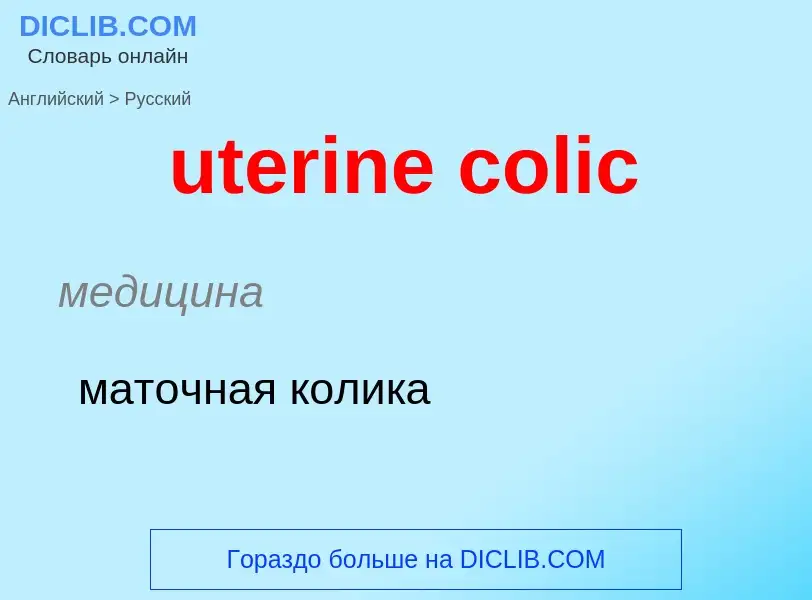Traduzione e analisi delle parole tramite l'intelligenza artificiale ChatGPT
In questa pagina puoi ottenere un'analisi dettagliata di una parola o frase, prodotta utilizzando la migliore tecnologia di intelligenza artificiale fino ad oggi:
- come viene usata la parola
- frequenza di utilizzo
- è usato più spesso nel discorso orale o scritto
- opzioni di traduzione delle parole
- esempi di utilizzo (varie frasi con traduzione)
- etimologia
uterine colic - traduzione in russo
медицина
маточная колика
медицина
колика грудного ребёнка
"детская" колика
медицина
маточное дисфункциональное кровотечение
Definizione
Wikipedia

Baby colic, also known as infantile colic, is defined as episodes of crying for more than three hours a day, for more than three days a week, for three weeks in an otherwise healthy child. Often crying occurs in the evening. It typically does not result in long-term problems. The crying can result in frustration of the parents, depression following delivery, excess visits to the doctor, and child abuse.
The cause of colic is unknown. Some believe it is due to gastrointestinal discomfort like intestinal cramping. Diagnosis requires ruling out other possible causes. Concerning findings include a fever, poor activity, or a swollen abdomen. Fewer than 5% of infants with excess crying have an underlying organic disease.
Treatment is generally conservative, with little to no role for either medications or alternative therapies. Extra support for the parents may be useful. Tentative evidence supports certain probiotics for the baby and a low-allergen diet by the mother in those who are breastfed. Hydrolyzed formula may be useful in those who are bottlefed.
Colic affects 10–40% of babies. Equally common in bottle and breast-fed infants, it begins during the second week of life, peaks at 6 weeks, and resolves between 12 and 16 weeks. It rarely lasts up to one year of age. It occurs at the same rate in boys and in girls. The first detailed medical description of the problem was published in 1954.


